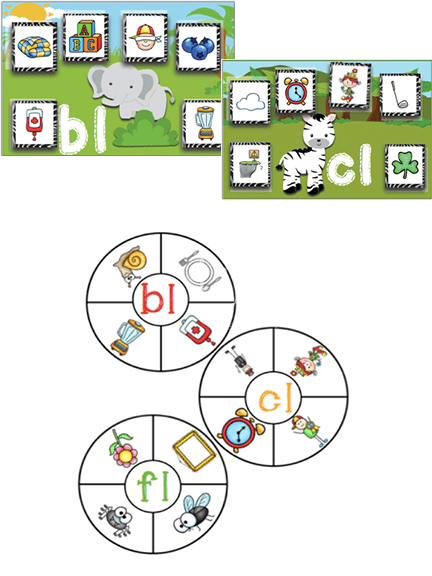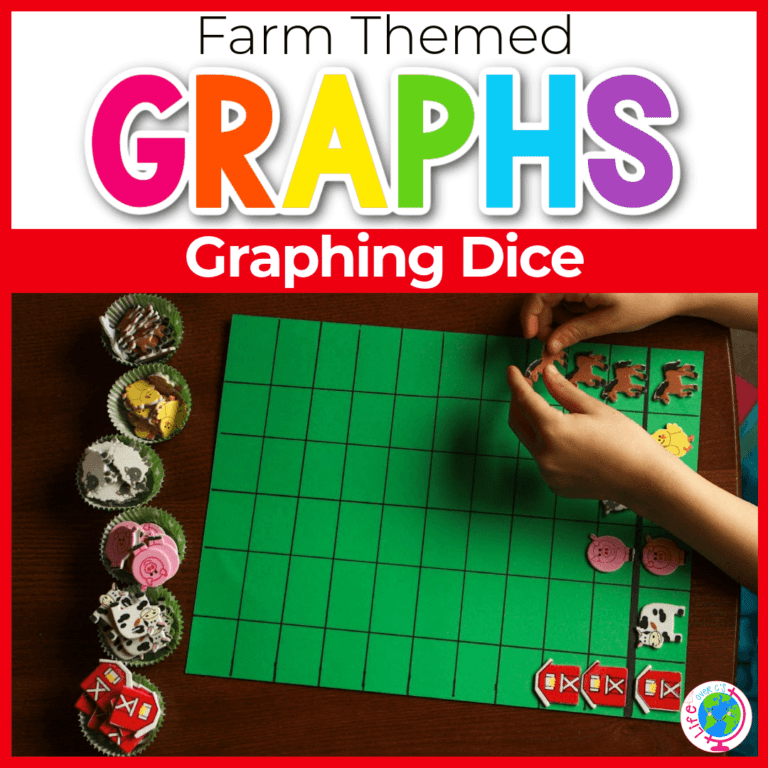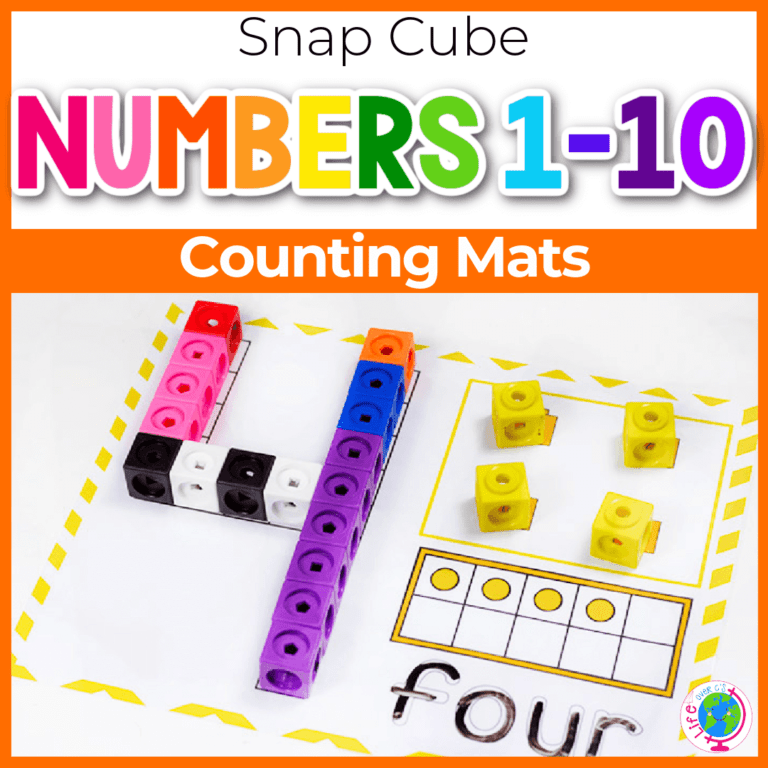Fun and Hands-On Blends and Digraphs Activity Pack
Teaching blends and digraphs should begin with our ears, “Say scarf. Say shark. What do you HEAR at the beginning?” When we teach blends and digraphs it’s important to emphasize that we’re hearing two sounds blending together in a blend, but digraphs only make one sound. Once kids understand that, they’re like little blend and digraphs word detectives finding them in places you’ve taken for granted! The consonant Blends and Digraphs Activity Pack is 265+ pages of hands-on, engaging activities in full-color and black & white for learning to read. More than ten activities for lots of opportunities to practice digraphs and blends with different skill levels.

Recommended Grade Level:
Learning Consonant Blends and Digraphs in Primary Grades
BLENDS AND DIGRAPHS GAMES
FOCUS ON DIGRAPHS AND BLENDS SEPARATELY, BECAUSE THEY ARE ACTUALLY TWO DIFFERENT THINGS.
Are you wondering what is the difference between blends and digraphs? They are both two-letter combinations. However, blends “blend” together. You can still hear each individual sound, whereas digraphs go together to produce one sound.
There are many common blends, but digraphs are limited to /sh/th/wh/ch/ph/.
This pack of hands-on activities focuses on consonant clusters (blends) words and digraphs. When kids are working on decoding and building reading fluency, it’s important to give them lots and lots of practice with one skill at a time. Or they might become confused! Teach digraphs in the same way with hands-on practice!
I love the consonant blends puzzles because it’s super valuable practice without a blends/digraphs worksheet in sight!
Here are some helpful ways to introduce and emphasize consonant blends:
- As you say each word, stretch out the sounds in the blends to help kids hear them
- Ask children to repeat the stretched out sounds to see if they can identify the blend
- Ask, “What sounds do you hear? What letters blend together to make those sounds?”
- Highlight blends with markers as you work on worksheets or printables

What Can 2nd Grade Learn While Working With Blends and Digraphs Word Lists?
WORDS WITH BLENDS AND DIGRAPHS
LEARNING THAT TWO CONSONANTS NEXT TO EACH OTHER WILL BLEND TOGETHER IS A VALUABLE PIECE OF INFORMATION FOR KIDS AS THEY PIECE TOGETHER THE CODE OF READING.
The more we can teach kids about how our written language works, the better. Don’t be afraid to teach kids to identify and name blends as “blends”! It will help them read multi-syllabic words without help because they understand how to decode specific combinations of letters like vowels, digraphs, prefixes, suffixes, etc.
Here are the beginning blends and digraphs you’ll find within the activity pack:
- bl/cl/gl/fl/pl/sl
- br/cr/fr/dr/gr/pr/tr
- sc/sk/sl/sm/sn/sp/st/sw
- sh/ch/th/wh/ph
Why Is It Important For Kids To Learn About Consonant Blends?
Learning to read is obviously key in elementary school. Teachers should be very explicit with instruction and provide lots of hands-on activities for practice.
Improved Phonics: Teaching blends and digraphs with free printable activities helps kids decode and blend sounds more effectively, laying a strong foundation for reading and word recognition.
Vocabulary: Learning consonant blends exposes children to a broader range of words, many of which are commonly used in the English language.
Fluency: Instead of pausing to sound out each individual letter, they can quickly identify blends and read them together, leading to smoother and more effortless reading.
Spelling: Kids who are familiar with digraphs and blends worksheets are more likely to spell words correctly, as they grasp the phonetic patterns that govern these sounds in various words.
How to Make the Blends & Digraphs Activities
Beginning Sound Sorting Mats, p. 4-22:
Students will sort pictures by their beginning sounds. You can select the letters that you want them to practice.
Blends Activity Pack:
There are 6 pictures for most letters. For digraph ph- I have included words with the digraph as a medial sound due to a lack of usable words.
3-Piece Beginning Sound Puzzles, p. 23-32
Students will match beginning sounds to two pictures.
2-Piece Beginning Sound Puzzles, p. 33-38
Students will match beginning sounds to two pictures.
Match the Beginning Sound Puzzles, p. 39-44
Students will match two pictures with the same beginning sound.
Beginning Blends & Digraphs Circle Clip Cards, p. 45-64:
Students will use a clothespin or paper clip to show the two pictures on each card that have the same beginning sound as the blend/digraph in the center.
By alternating the use of clothespins and paper clips students will use different fine motor skills.
For an additional challenge, label the clothespins with the uppercase letters for the students to match. You will need 2 of each beginning sound.
Take a look at the sensory bin that we created for these clip cards
Beginning Blend Matching Mats, p. 74, 76-86:
Students will draw a line to connect the pictures to the matching beginning sounds.
Beginning Sound Slap It, p. 75-86:
Print on card stock and/or laminate the cards. (Card stock is recommended because some children will try to see through the cards.)
You can use any format of cards for the center pile. It is best to use the format the students struggle with the most for the center pile because it allows them to relate the difficult format with formats that are easier for them to recognize.
I recommend going the cards with the students prior to playing the game, so that they become familiar with the words used to describe the pictures. As many terms can be used to describe several of the pictures this will help to eliminate any disagreements between players.
Beginning Blends & Digraphs Play Dough Mats, p. 87-112:
You can use these mats with play dough and the students can roll strips of play dough to form the letters.
Alternatively, students can use dry-erase markers to trace the letters.
Due to lack of ph- clip art, the ph page asks students to circle words that have ph in them.
Beginning Blends & Digraphs Magnet Mats, p. 113-138:
Students will use alphabet magnets to create the blends and digraphs that match each picture. You can use these as full pages or cut them apart to mix and match. There are three pictures for each color.
Extend the Activity
Introduction to Blends/Digraphs
If you want to use the activities as an introduction to letter combinations, simply use the puzzle pictures to focus on the individual sounds that make each blend.
Write Them
After all of the consonant cluster words have been matched with the pictures, children can write a word list for extra reinforcement. I would have them highlight the blends after writing.
Differentiate
If some children are overwhelmed by so many different blends and puzzle pieces, simply reduce the amount of pieces you give them. When they are more comfortable, you can add more words.
Do you love this activity?
Pin it for later!

More Activities You’ll Love:
Search All Activities
Looking for more? Find exactly what you need here:




















